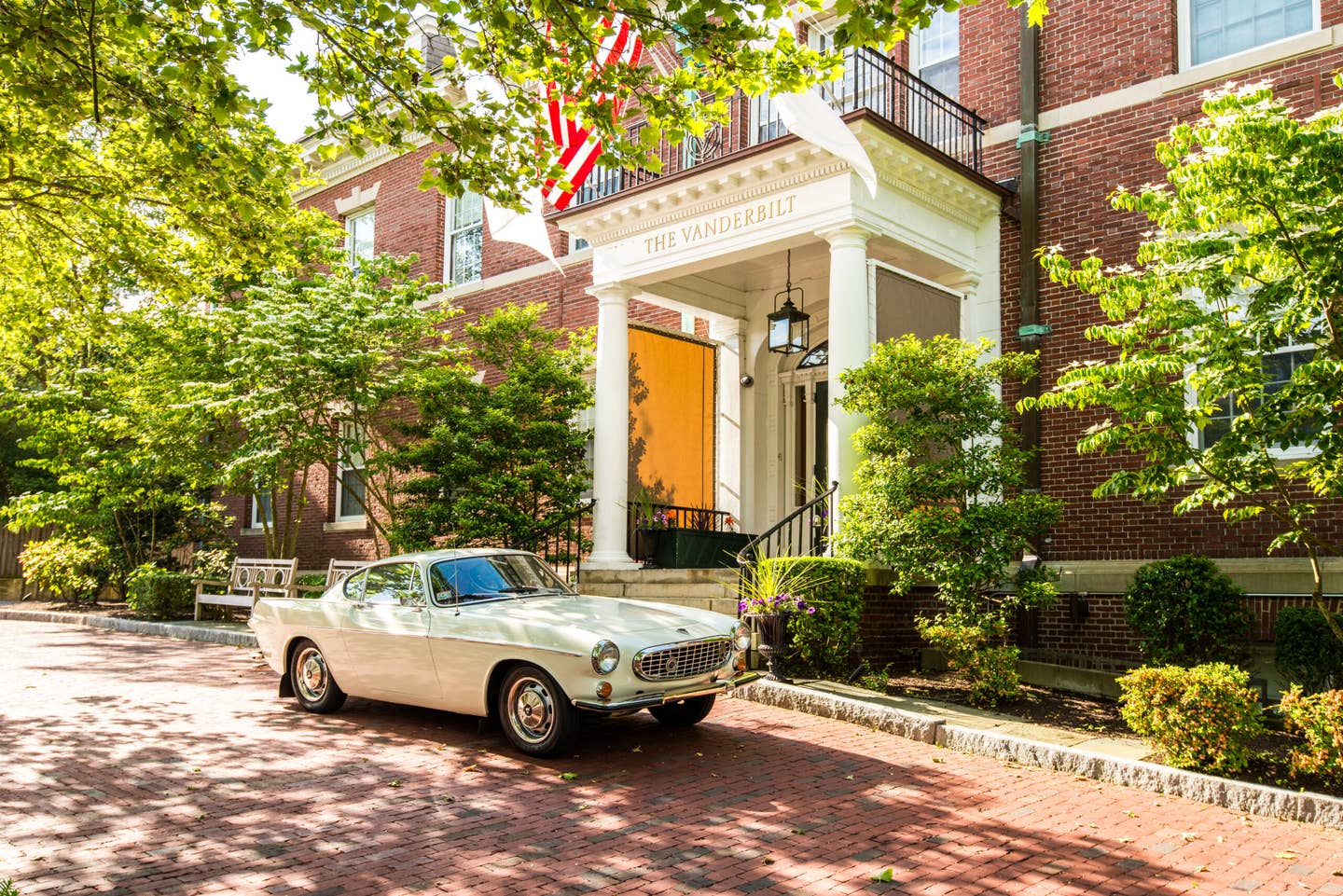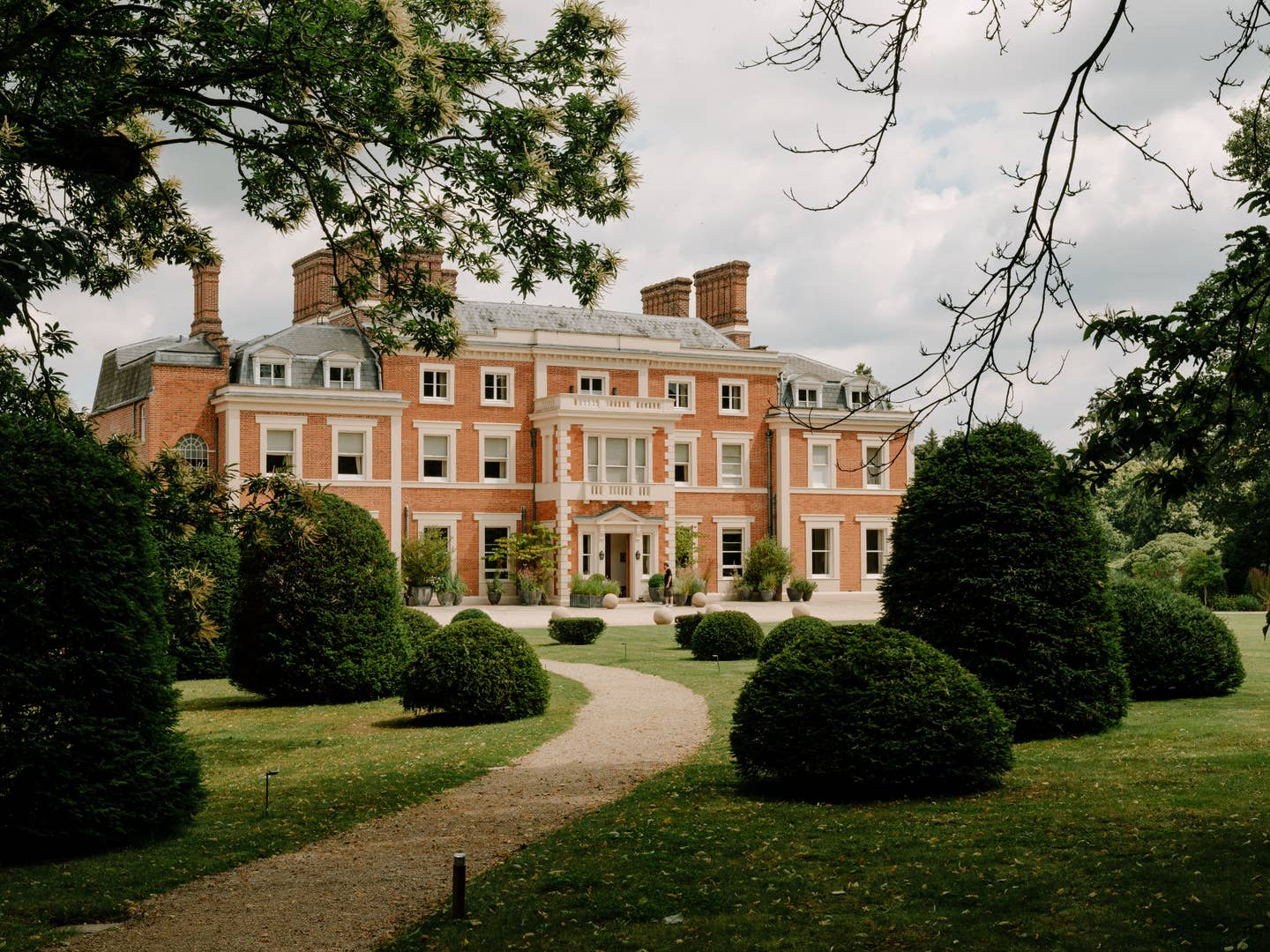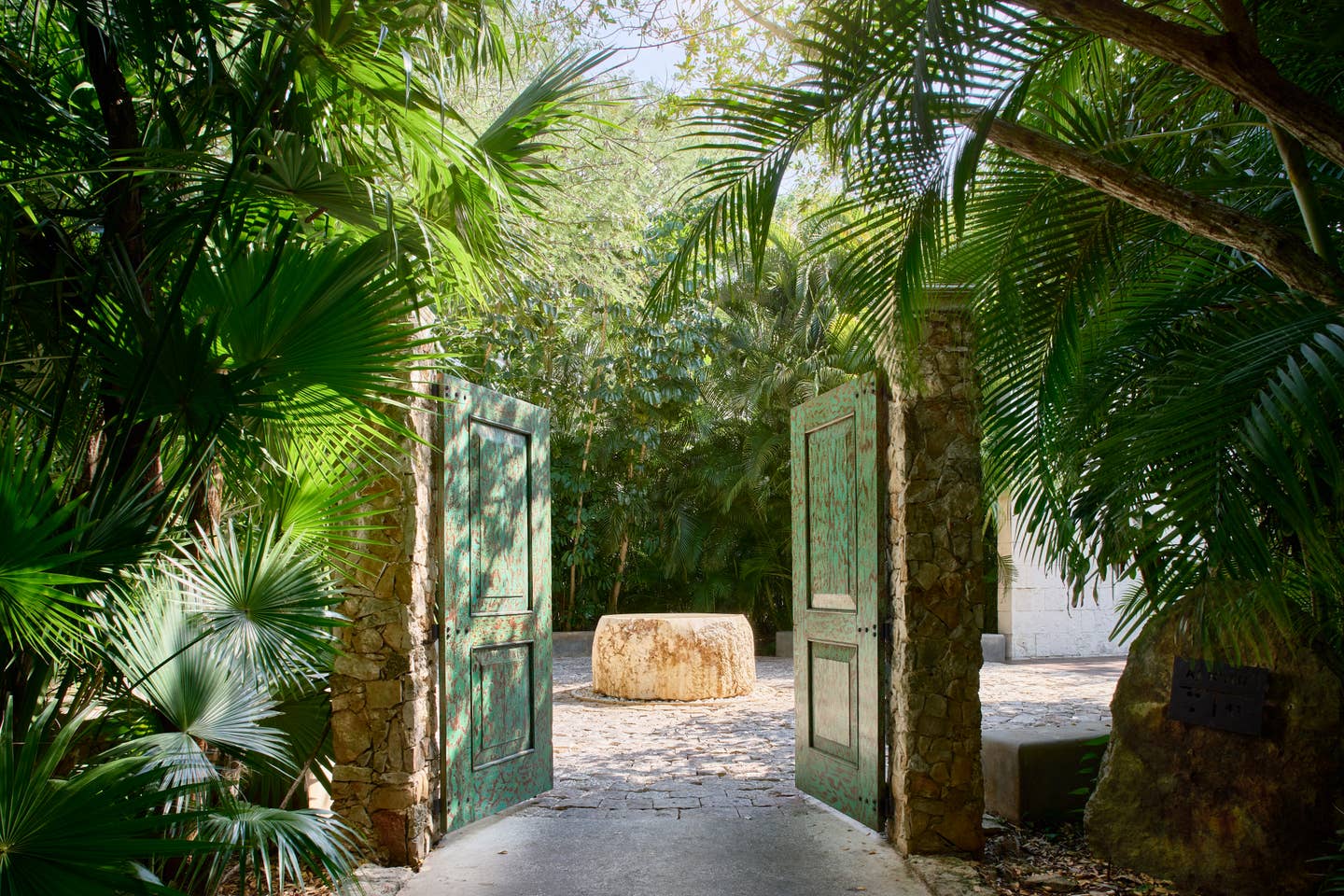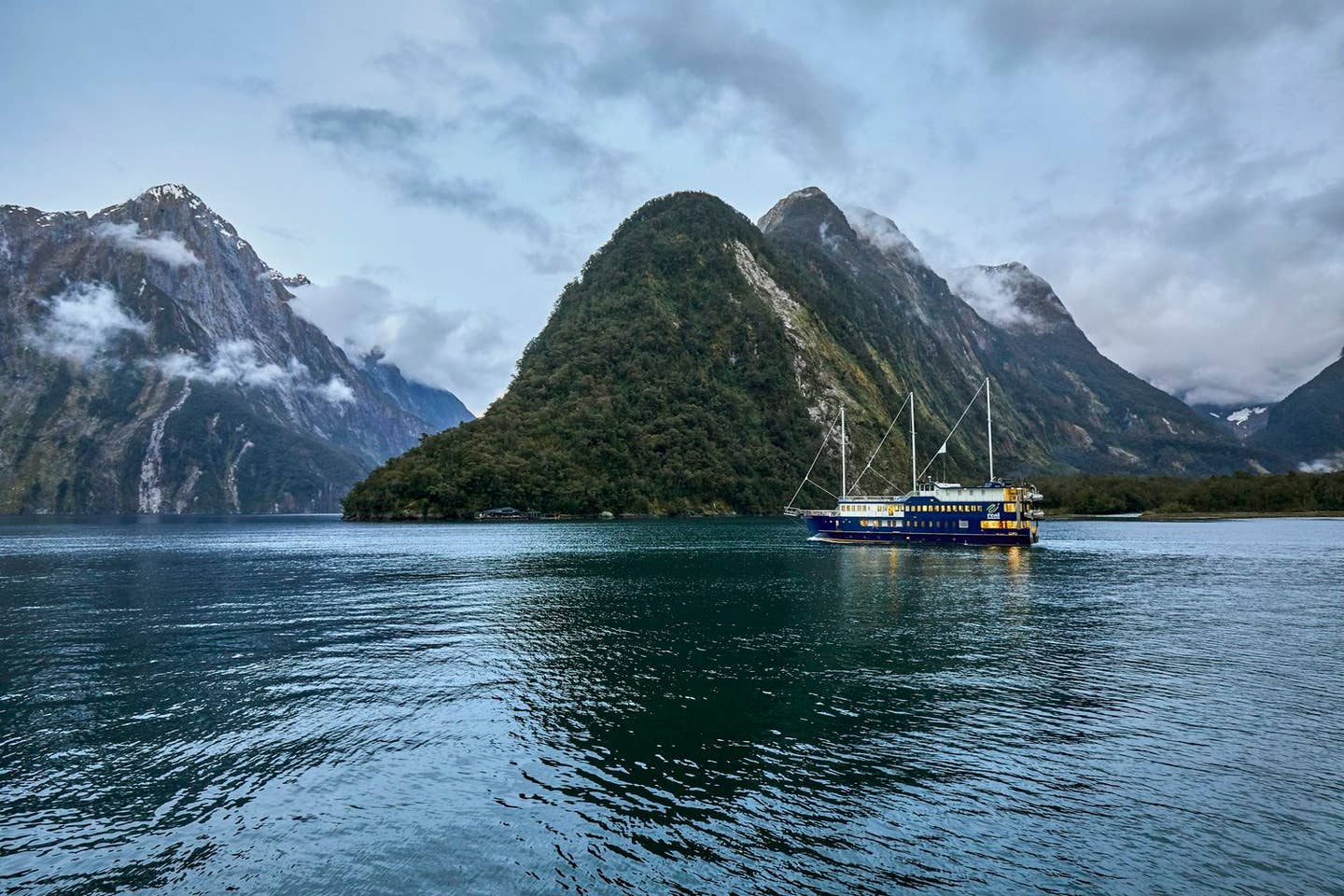Slow Food International famously began in Italy as a protest to the opening of a McDonald’s near the Spanish Steps in Rome. The whole idea was to slow down, take the time to eat locally and sustainably and, basically, not let fast food take over our lives. Since then, Slow Food has grown to 160 countries with 100,000 members worldwide. As well as tackling climate change with grassroots action, coalitions like Slow Food Coffee work to improve not only the environment, but human and labor rights, transparency and traceability and something deliciously called the right to pleasure. I’ve long wanted to go back where it started and experience high and low dining there.
The Sofitel Villa Borghese turned out to be the perfect Roman home base in a wildly elegant 19th-century palazzo. A recent makeover by Jean-Philippe Nuel has left it jewel-toned—greens, oranges, blues—sophisticated and beautifully designed. Tall windows in our room were thrown open to face the moon rising over the dark Borghese Gardens right outside. Inside, there were seraphim frescoes on the ceiling, ornate white mirrors and perfect crisp sheets on a perfect bed. The Italian lighting was ingenious with clever buttons that did all kinds of things you didn’t know were necessary but turned out to be.
The Ludovisi neighborhood was full of huge pink villas—the whole city seemed pink—and nearby Como Il Latte served a mean pistachio gelato, a good thing as, by the end of the trip, you could have hooked me up to a gelato IV. We walked an insane amount, and discovered that Rome was surprising and brash and insistent and, of course, distractingly beautiful. The walls and ruins built as long ago as the First Century BC were plunked down in the middle of busy streets, the ancient seamlessly interacting with the new. We went to Saint Peter’s Basilica in Vatican City—awe-inspiring and gold-leafed—and also ventured to edgier neighborhoods like Testaccio, home to Centrale Montemartini, a defunct electricity-factory-turned-museum with ancient Roman statues of sensual male and female nudes displayed against the hulking old generators. Oh, and have I mentioned the food?
Slow Food Italy started the entire Slow Food movement, championing organic and local for the sake of our planet and health. At the Nuovo Mercato di Testaccio, vendors sold fresh pasta, bright produce, and street snacks. The suppli classico at Foodbox (a member of Slow Food), was one of the best things I’ve ever had, a crispy oval of rice that shattered into a fantasia of red sauce, basil, sausage and mozzarella. Luckily, Chef Giuseppe D’Alessio does his own version at Settimi, the Sofitel Villa Borghese’s rooftop restaurant with a spectacular view of all Rome. His suppli was no less fantastic, a light, delicate and nuanced riff on the street food with its own little cup of Parmesan dipping sauce.
D’Alessio told me he was from Salerno, where he started cooking as a child, helping his madre make the weekly bread and pasta. He also incorporates simplicity, authenticity and seasonality—his watch words—into delicious dishes like cacio e pepe, the Roman specialty of salt-and-pepper pasta, and pan-fried sea bream. For dessert, he baked us a ricotta and cherry crostata, the specialty from the Jewish Ghetto that we’d been talking about earlier that afternoon.
The crostata was born out of necessity, as was most of the exquisite Jewish Roman Cuisine. Originally established by Papal bull in 1555 AD, the ghetto was kept going for 300 years to keep the Jews separated and hemmed in. Brutal sumptuary laws governed what they could wear (no fur or silk), do (rag-picking), and even eat. As they weren’t allowed dairy—no cheese!—the crostata’s crust originally hid the forbidden ricotta. Chef Giuseppe’s tart was deeply delicious, and seemed to incorporate all the contradictions of Rome.
After five days in the city, a three hour road trip to Tuscany gave us a rest, though there was no letup to the sensory overload. In October, the fields had been tilled and the leaves had turned from green to yellow. The drop cloths had been brought out to catch the olives as they fell from the trees. Truffle season had ramped up again with white ones instead of the black available in the Spring. Everywhere you looked, the countryside seemed still, a patchwork of fields around turreted towns, and COMO Castello del Nero, once a 12th century castle, rose up like a fairytale mirage.
As with the other hotels in the COMO Hotels & Resorts Group, Castello del Nero was lavish and minimalist at the same time. Descending in tiers down a hill, it had a grand heated pool, a gym with a view, a beautiful spa and a marble pizza kitchen with a wood burning oven. In the commanding lobby, every detail seemed considered, from the delicate fringes on couches and lampshades to the black ceramic candelabras to the formal dining room with handblown glassware and many shades of gray. The rooms were beautiful too, simple and luxurious with postcard views of the vibrant countryside outside.
Castello del Nero has its own Michelin-starred Executive Chef, Giovanni Luca Di Pirro. Originally from Bologna, Chef Di Pirro told me his mother was the best chef in the world. Mothers and chefs, it seems, are a thing, perhaps because so much about taste is about memory.
“In my life,” he said. “It’s sweet to remember the food, for the flavor. For me, it’s very important. It always comes back to the past.”
Aside from his mom’s elusive lasagna—“I do it the same way, with the same ingredients, and still it doesn’t come out the same”—he revels in his ingredients, all of which he sources close to home.
Castello Del Nero makes its own wine, as well as a five-starred olive oil. Professional truffle hunters take their lagotto romagnolo dogs into the woods every day. Laura Peri of Azienda Agricola upplies happy White Valdarnese chickens, pigeons and Chianina beef for Fiorentina Steak, though Chef told me he’d like to get away altogether from meat.
That night, Chef Di Pirro’s inventive tasting menu included a Jerusalem artichoke and white truffle flan and a roasted eggplant with tomatoes, basil and burrata, but what really knocked us out was a perfect swirl of spaghetti topped with a Mazzancolle shrimp tartare and Italian caviar. Salty and briny, the umami of the seafood perfectly cut the richness of the hot peppered pasta.
The hotel is convenient to the best of Tuscany. We drove the half hour to Florence, and loitered in medieval hilltop towns like Pienza and Sam Gimignano. For us though, Siena turned out to be the beauty queen. The Duomo cathedral is a striped affair of green and white marble with a gorgeous Donatello fresco and a spectacular library of illuminated folios. When we went a choir was rehearsing somewhere up towards the domed ceiling; it was like being in the presence of angels which, in Tuscany, didn’t seem that surprising after all.
If you go, you will find the world greatly changed since the pandemic, but the exhilaration of being out there will make it completely worthwhile.





